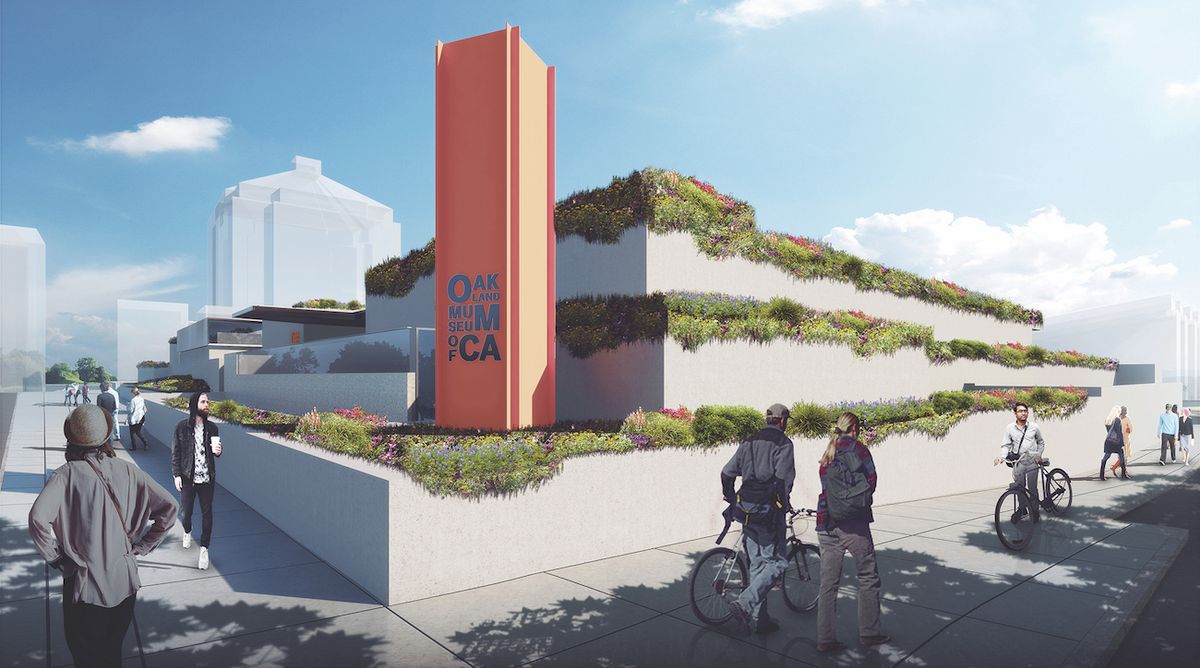“We are as close to a town square as Oakland has,” says Lori Fogarty, the director and chief executive of the Oakland Museum of California, founded 50 years ago by the city as a “museum for the people” and bringing together the art, history and natural sciences of the region.
The museum is keeping that inaugural faith with a campaign to raise $85m for a renovation and landscaping project, as well as exhibitions and other initiatives to make the museum more welcoming to visitors in one of the most diverse cities in the US. “We started with the framework that the museum was going to contribute to Oakland becoming a more equitable and empathetic city,” says Fogarty, who aims to raise the average annual attendance from 200,000 to 250,000 and attract more visitors within a ten-mile radius.
This month, the museum is kicking off exterior renovations to its Brutalist-style building with central courtyard and terraced gardens, originally designed by Kevin Roche and landscaped by Dan Kiley. The masterplan by Walter Hood of Hood Design Studio features two new entrances for the seven-acre walled-in campus, better circulation through the public spaces, and a planting scheme of native Californian species. The physical changes are “literally breaking the box and throwing out the welcome mat to our neighbourhood”, says Fogarty, who has allocated $15m for the work, which is due for completion by summer 2020.
“We’re one of the few places where there’s a beautiful green space, and all of these neighbourhoods feel a sense of connection,” Fogarty adds, pointing out that five distinct communities lie within a mile of the museum.
She says she was inspired in part by the success of the museum’s Friday night events, now in their seventh year, which bring in 4,000 to 5,000 people every weekend for outdoor performances, activities and food trucks.
Hood, who is working with the San Francisco-based architectural firm Mark Cavagnero Associates, will remove a corner section of the concrete walls facing Lake Merritt to allow direct access to the museum’s gardens from the lake and park, which was recently cleaned up as part of Oakland’s overall regeneration scheme to attract young professionals and families.

A Lonnie Wilson image from Oakland’s Black Panthers at 50 show Courtesy of the Oakland Museum of California
Hood will remove many of the overgrown plantings not native to California and create ecoregions including low desert, woodlands and coastal prairie to correspond with programming in the natural sciences galleries and reinforce the museum’s mission. “We know now that there are much more sustainable ways to plant in our climate,” he says. Two dozen sculptures by artists such as Mark di Suvero, Viola Frey and Peter Voulkos will also be reinstalled.
The campus changes are an extension of what Fogarty has been doing since taking the helm in 2006, overseeing a shift in the museum’s demographics to better reflect Oakland. People of colour now represent more than half of the museum’s visitors and staff, as well as two-fifths of its board.
Building on the success of explicitly political and social exhibitions including All Power to the People: Black Panthers at 50 on the Oakland-born political organisation—which drew a record 84,000 visitors in 2016—Fogarty is now looking to measure the institution’s social impact. Working with social science researchers over the past year, the museum has built questions on social cohesion into visitor surveys, such as whether people saw their stories reflected, and if they connected with people unlike themselves.
This ongoing initiative, supported by the $30m of the capital campaign earmarked for curatorial and public programmes, has informed shows including the recent Queer California: Untold Stories and We Women: A History of Feminism, due to open next spring.
The remaining $40m of the fundraising campaign will go towards an endowment to help replace the funding being phased out by the city by 2021, following the museum’s transition in 2011 to an independent non-profit organisation.
Fogarty acknowledges that it is a tall order for a museum to tackle urban fragmentation but she believes Oakland has the capacity to do it. “It is a city where people move to be in a place that’s more diverse,” she says. “They want their kids to experience that and have that be part of their civic life.”


